Epigenetic Alterations in Cryopreserved Human Spermatozoa: Suspected Potential Functional Defects
Abstract
:1. Introduction
2. Materials and Methods
2.1. Sample Collection
2.2. Experimental Design and Cryopreservation
2.3. Transmission Electron Microscopy
2.4. Sequencing, Data Extraction and Gene Set Enrichment Analysis of mRNA Expression
2.5. Alternative Splicing Analysis and Exon Skipping Events Annotation in KEGG Pathway
3. Results
3.1. Gene Set Enrichment Analysis in Human Spermatozoa Sequencing
3.1.1. Gene Expression Set Analysis Shows Cryopreservation Process Is Significantly Relevant to Mitochondrial tRNA Aminoacylation in Human Spermatozoa
3.1.2. ATP Dependent Microtubule Motor Activity
3.1.3. Male Meiotic Nuclear Division (GO ID:0007140)
3.2. Ultrastructure Difference in Three Groups of Spermatozoa
3.3. Alternative Splicing Event in Cryopreserved Spermatozoa
Examples of A3SS, A5SS, MXE, SE and RI on Sequences
4. Discussion
4.1. GSEA Is a Advanced Method for the Spermatozoa Sequencing Datasets
4.2. Mitochondrial tRNA Aminoacylation in Human Spermatozoa
4.3. ATP Dependent Microtubule Motor Activity
4.4. Male Meiotic Nuclear Division
4.5. Frequent Alternative Splicing Events, Especially Exon Skipping
4.6. Other Epigenetics Alternation in Human Gametes and Zygotes
4.7. Potential Modeling of Asthenozoospermia Using Vitrified Human Spermatozoa
4.8. Limitation of the Study
5. Conclusions
Supplementary Materials
Author Contributions
Funding
Institutional Review Board Statement
Informed Consent Statement
Data Availability Statement
Acknowledgments
Conflicts of Interest
References
- The European IVF-Monitoring Consortium; European Society of Human Reproduction and Embryology; Wyns, C.; Bergh, C.; Calhaz-Jorge, C.; De Geyter, C.; Kupka, M.S.; Motrenko, T.; Rugescu, I.; Smeenk, J.; et al. ART in Europe, 2016: Results generated from European registries by ESHRE. Hum. Reprod. Open 2020, 2020, hoaa032. [Google Scholar] [CrossRef] [PubMed]
- Hezavehei, M.; Sharafi, M.; Kouchesfahani, H.M.; Henkel, R.; Agarwal, A.; Esmaeili, V.; Shahverdi, A. Sperm cryopreservation: A review on current molecular cryobiology and advanced approaches. Reprod. Biomed. Online 2018, 37, 327–339. [Google Scholar] [CrossRef] [PubMed]
- Estudillo, E.; Jiménez, A.; Bustamante-Nieves, P.E.; Palacios-Reyes, C.; Velasco, I.; López-Ornelas, A. Cryopreservation of Gametes and Embryos and Their Molecular Changes. Int. J. Mol. Sci. 2021, 22, 10864. [Google Scholar] [CrossRef] [PubMed]
- Riva, N.S.; Ruhlmann, C.; Iaizzo, R.S.; Marcial López, C.A.; Martínez, A.G. Comparative analysis between slow freezing and ultra-rapid freezing for human sperm cryopreservation. JBRA Assist. Reprod. 2018, 22, 331–337. [Google Scholar] [CrossRef]
- Isachenko, E.; Isachenko, V.; Katkov, I.I.; Rahimi, G.; Schöndorf, T.; Mallmann, P.; Dessole, S.; Nawroth, F. DNA integrity and motility of human spermatozoa after standard slow freezing versus cryoprotectant-free vitrification. Hum. Reprod. 2004, 19, 932–939. [Google Scholar] [CrossRef] [Green Version]
- Isachenko, V.; Rahimi, G.; Mallmann, P.; Sanchez, R.; Isachenko, E. Technologies of cryoprotectant-free vitrification of human spermatozoa: Asepticity as criterion of effectiveness. Andrology 2017, 5, 1055–1063. [Google Scholar] [CrossRef] [Green Version]
- Khan, I.M.; Cao, Z.; Liu, H.; Khan, A.; Rahman, S.U.; Khan, M.Z.; Sathanawongs, A.; Zhang, Y. Impact of Cryopreservation on Spermatozoa Freeze-Thawed Traits and Relevance OMICS to Assess Sperm Cryo-Tolerance in Farm Animals. Front. Vet. Sci. 2021, 8, 609180. [Google Scholar] [CrossRef]
- Wang, M.; Todorov, P.; Wang, W.; Isachenko, E.; Rahimi, G.; Mallmann, P.; Isachenko, V. Cryoprotectants-Free Vitrification and Conventional Freezing of Human Spermatozoa: A Comparative Transcript Profiling. Int. J. Mol. Sci. 2022, 23, 3047. [Google Scholar] [CrossRef]
- Kumar, P.; Wang, M.; Isachenko, E.; Rahimi, G.; Mallmann, P.; Wang, W.; von Brandenstein, M.; Isachenko, V. Unraveling Subcellular and Ultrastructural Changes during Vitrification of Human Spermatozoa: Effect of a Mitochondria-Targeted Antioxidant and a Permeable Cryoprotectant. Front. Cell Dev. Biol. 2021, 9, 672862. [Google Scholar] [CrossRef]
- Zhang, Y.; Dai, D.; Chang, Y.; Li, Y.; Zhang, M.; Zhou, G.; Peng, Z.; Zeng, C. Cryopreservation of boar sperm induces differential microRNAs expression. Cryobiology 2017, 76, 24–33. [Google Scholar] [CrossRef]
- Ren, X.; Chen, X.; Wang, Z.; Wang, D. Is transcription in sperm stationary or dynamic? J. Reprod. Dev. 2017, 63, 439–443. [Google Scholar] [CrossRef] [PubMed] [Green Version]
- Denomme, M.M.; McCallie, B.R.; Parks, J.C.; Schoolcraft, W.B.; Katz-Jaffe, M.G. Alterations in the sperm histone-retained epigenome are associated with unexplained male factor infertility and poor blastocyst development in donor oocyte IVF cycles. Hum. Reprod. 2017, 32, 2443–2455. [Google Scholar] [CrossRef] [PubMed]
- Parrilla, I.; Perez-Patiño, C.; Li, J.; Barranco, I.; Padilla, L.; Rodriguez-Martinez, H.; Martinez, E.A.; Roca, J. Boar semen proteomics and sperm preservation. Theriogenology 2019, 137, 23–29. [Google Scholar] [CrossRef] [PubMed]
- Pini, T.; Rickard, J.P.; Leahy, T.; Crossett, B.; Druart, X.; de Graaf, S.P. Cryopreservation and egg yolk medium alter the proteome of ram spermatozoa. J. Proteom. 2018, 181, 73–82. [Google Scholar] [CrossRef]
- Verheijen, M.; Lienhard, M.; Schrooders, Y.; Clayton, O.; Nudischer, R.; Boerno, S.; Timmermann, B.; Selevsek, N.; Schlapbach, R.; Gmuender, H.; et al. DMSO induces drastic changes in human cellular processes and epigenetic landscape in vitro. Sci. Rep. 2019, 9, 4641. [Google Scholar] [CrossRef] [Green Version]
- Palechor-Ceron, N.; Krawczyk, E.; Dakic, A.; Simic, V.; Yuan, H.; Blancato, J.; Wang, W.; Hubbard, F.; Zheng, Y.L.; Dan, H.; et al. Conditional Reprogramming for Patient-Derived Cancer Models and Next-Generation Living Biobanks. Cells 2019, 8, 1327. [Google Scholar] [CrossRef] [Green Version]
- Best, B.P. Cryoprotectant Toxicity: Facts, Issues, and Questions. Rejuvenation Res. 2015, 18, 422–436. [Google Scholar] [CrossRef] [Green Version]
- Raju, R.; Bryant, S.J.; Wilkinson, B.L.; Bryant, G. The need for novel cryoprotectants and cryopreservation protocols: Insights into the importance of biophysical investigation and cell permeability. Biochim. Biophys. Acta Gen. Subj. 2021, 1865, 129749. [Google Scholar] [CrossRef]
- Hidalgo, M.; Consuegra, C.; Dorado, J.; Diaz-Jimenez, M.; Ortiz, I.; Pereira, B.; Sanchez, R.; Crespo, F. Concentrations of non-permeable cryoprotectants and equilibration temperatures are key factors for stallion sperm vitrification success. Anim. Reprod. Sci. 2018, 196, 91–98. [Google Scholar] [CrossRef]
- Schulz, M.; Risopatrón, J.; Uribe, P.; Isachenko, E.; Isachenko, V.; Sánchez, R. Human sperm vitrification: A scientific report. Andrology 2020, 8, 1642–1650. [Google Scholar] [CrossRef]
- Petrushko, M.; Yurchuk, T.; Todorov, P.; Hristova, E.; Piniaiev, V.; Isachenko, E.; Rahimi, G.; Mallmann, P.; Isachenko, V. New method for cryoprotectant-free freezing of human oligoasthenoteratozoospremic spermatozoa with high-molecular polymer. Cryobiology 2021, 103, 39–44. [Google Scholar] [CrossRef]
- Isachenko, V.; Isachenko, E.; Petrunkina, A.M.; Sanchez, R. Human spermatozoa vitrified in the absence of permeable cryoprotectants: Birth of two healthy babies. Reprod. Fertil. Dev. 2012, 24, 323–326. [Google Scholar] [CrossRef] [PubMed]
- Wang, M.; Todorov, P.; Isachenko, E.; Rahimi, G.; Wang, W.; von Brandenstein, M.; Kumar, P.; Mallmann, P.; Isachenko, V. Aseptic capillary vitrification of human spermatozoa: Cryoprotectant-free vs. cryoprotectant-included technologies. Cryobiology 2021, 99, 95–102. [Google Scholar] [CrossRef] [PubMed]
- Si, W.; Benson, J.D.; Men, H.; Critser, J.K. Osmotic tolerance limits and effects of cryoprotectants on the motility, plasma membrane integrity and acrosomal integrity of rat sperm. Cryobiology 2006, 53, 336–348. [Google Scholar] [CrossRef] [PubMed]
- Pegg, D.E. Principles of Cryopreservation; Humana Press: Totova, NJ, USA, 2007; pp. 39–57. [Google Scholar]
- Paoli, D.; Pallotti, F.; Nigro, G.; Aureli, A.; Perlorca, A.; Mazzuti, L.; Di Carlo, D.; Turriziani, O.; Lenzi, A.; Lombardo, F. Sperm cryopreservation during the SARS-CoV-2 pandemic. J. Endocrinol. Investig. 2021, 44, 1091–1096. [Google Scholar] [CrossRef]
- De Santis, L.; Parmegiani, L.; Scarica, C. Changing perspectives on liquid nitrogen use and storage. J. Assist. Reprod. Genet. 2021, 38, 783–784. [Google Scholar] [CrossRef]
- Zafer, M.; Horvath, H.; Mmeje, O.; van der Poel, S.; Semprini, A.E.; Rutherford, G.; Brown, J. Effectiveness of semen washing to prevent human immunodeficiency virus (HIV) transmission and assist pregnancy in HIV-discordant couples: A systematic review and meta-analysis. Fertil. Steril. 2016, 105, 645–655.e642. [Google Scholar] [CrossRef] [Green Version]
- Joaquim, D.C.; Borges, E.D.; Viana, I.G.R.; Navarro, P.A.; Vireque, A.A. Risk of Contamination of Gametes and Embryos during Cryopreservation and Measures to Prevent Cross-Contamination. Biomed. Res. Int. 2017, 2017, 1840417. [Google Scholar] [CrossRef]
- Tomlinson, M. Risk management in cryopreservation associated with assisted reproduction. Cryo Lett. 2008, 29, 165–174. [Google Scholar]
- Patra, T.; Pathak, D.; Gupta, M.K. Strategies for cryopreservation of testicular cells and tissues in cancer and genetic diseases. Cell Tissue Res. 2021, 385, 1–19. [Google Scholar] [CrossRef]
- Tian, J.; Ma, K.; Pei, C.B.; Zhang, S.H.; Li, X.; Zhou, Y.; Yan, B.; Wang, H.Y.; Ma, L.H. Relative safety of various spermatogenic stem cell purification methods for application in spermatogenic stem cell transplantation. Stem Cell Res. Ther. 2019, 10, 382. [Google Scholar] [CrossRef] [PubMed]
- Jahnukainen, K.; Hou, M.; Petersen, C.; Setchell, B.; Söder, O. Intratesticular transplantation of testicular cells from leukemic rats causes transmission of leukemia. Cancer Res. 2001, 61, 706–710. [Google Scholar] [PubMed]
- WHO. Laboratory Manual for the Examination and Processing of Human Semen, 6th ed.; World Health Organization: Geneva, Switzerland; Available online: https://www.who.int/publications/i/item/9789240030787 (accessed on 12 April 2022).
- Wang, M.; Isachenko, E.; Todorov, P.; Rahimi, G.; Mallmann, P.; Katkov, I.I.; Isachenko, V. Aseptic Technology for Cryoprotectant-Free Vitrification of Human Spermatozoa by Direct Dropping into Clean Liquid Air: Apoptosis, Necrosis, Motility, and Viability. Biomed. Res. Int. 2020, 2020, 2934315. [Google Scholar] [CrossRef] [PubMed] [Green Version]
- Diaz-Jimenez, M.; Wang, M.; Wang, W.; Isachenko, E.; Rahimi, G.; Kumar, P.; Mallmann, P.; von Brandenstein, M.; Hidalgo, M.; Isachenko, V. Cryo-banking of human spermatozoa by aseptic cryoprotectants-free vitrification in liquid air: Positive effect of elevated warming temperature. Cell Tissue Bank. 2022, 23, 17–29. [Google Scholar] [CrossRef]
- Piñero, J.; Bravo, À.; Queralt-Rosinach, N.; Gutiérrez-Sacristán, A.; Deu-Pons, J.; Centeno, E.; García-García, J.; Sanz, F.; Furlong, L.I. DisGeNET: A comprehensive platform integrating information on human disease-associated genes and variants. Nucleic Acids Res. 2017, 45, D833–D839. [Google Scholar] [CrossRef] [PubMed]
- Shen, S.; Park, J.W.; Lu, Z.X.; Lin, L.; Henry, M.D.; Wu, Y.N.; Zhou, Q.; Xing, Y. rMATS: Robust and flexible detection of differential alternative splicing from replicate RNA-Seq data. Proc. Natl. Acad. Sci. USA 2014, 111, E5593–E5601. [Google Scholar] [CrossRef] [Green Version]
- Muller, I.B.; Meijers, S.; Kampstra, P.; van Dijk, S.; van Elswijk, M.; Lin, M.; Wojtuszkiewicz, A.M.; Jansen, G.; de Jonge, R.; Cloos, J. Computational comparison of common event-based differential splicing tools: Practical considerations for laboratory researchers. BMC Bioinform. 2021, 22, 347. [Google Scholar] [CrossRef]
- Xie, Z.; Tseng, Y.-T.; Xing, Y. rmats2sashimiplot-github. Available online: https://github.com/Xinglab/rmats2sashimiplot (accessed on 23 May 2022).
- Bu, D.; Luo, H.; Huo, P.; Wang, Z.; Zhang, S.; He, Z.; Wu, Y.; Zhao, L.; Liu, J.; Guo, J.; et al. KOBAS-i: Intelligent prioritization and exploratory visualization of biological functions for gene enrichment analysis. Nucleic Acids Res. 2021, 49, W317–W325. [Google Scholar] [CrossRef]
- Yu, G.; Wang, L.G.; Han, Y.; He, Q.Y. clusterProfiler: An R package for comparing biological themes among gene clusters. Omics 2012, 16, 284–287. [Google Scholar] [CrossRef]
- Wang, W.; Pei, C.; Isachenko, V. Original Analysis Results of GSEA and AS in Human Spermatozoa. 2022. Available online: https://figshare.com/articles/dataset/Original_analysis_results_of_GSEA_and_AS_in_human_spermatozoa/19576072 (accessed on 13 April 2022).
- Ognjenović, J.; Simonović, M. Human aminoacyl-tRNA synthetases in diseases of the nervous system. RNA Biol. 2018, 15, 623–634. [Google Scholar] [CrossRef] [Green Version]
- Fine, A.S.; Nemeth, C.L.; Kaufman, M.L.; Fatemi, A. Mitochondrial aminoacyl-tRNA synthetase disorders: An emerging group of developmental disorders of myelination. J. Neurodev. Disord. 2019, 11, 29. [Google Scholar] [CrossRef]
- Simon, M.; Richard, E.M.; Wang, X.; Shahzad, M.; Huang, V.H.; Qaiser, T.A.; Potluri, P.; Mahl, S.E.; Davila, A.; Nazli, S.; et al. Mutations of human NARS2, encoding the mitochondrial asparaginyl-tRNA synthetase, cause nonsyndromic deafness and Leigh syndrome. PLoS Genet. 2015, 11, e1005097. [Google Scholar] [CrossRef] [PubMed] [Green Version]
- Zhou, Y.; Chen, B.; Li, L.; Pan, H.; Liu, B.; Li, T.; Wang, R.; Ma, X.; Wang, B.; Cao, Y. Novel alanyl-tRNA synthetase 2 (AARS2) homozygous mutation in a consanguineous Chinese family with premature ovarian insufficiency. Fertil. Steril. 2019, 112, 569–576.e562. [Google Scholar] [CrossRef] [PubMed]
- Tiosano, D.; Mears, J.A.; Buchner, D.A. Mitochondrial Dysfunction in Primary Ovarian Insufficiency. Endocrinology 2019, 160, 2353–2366. [Google Scholar] [CrossRef] [PubMed]
- Maffezzini, C.; Laine, I.; Dallabona, C.; Clemente, P.; Calvo-Garrido, J.; Wibom, R.; Naess, K.; Barbaro, M.; Falk, A.; Donnini, C.; et al. Mutations in the mitochondrial tryptophanyl-tRNA synthetase cause growth retardation and progressive leukoencephalopathy. Mol. Genet. Genom. Med. 2019, 7, e654. [Google Scholar] [CrossRef] [Green Version]
- Hunter, B.; Allingham, J.S. These motors were made for walking. Protein Sci. 2020, 29, 1707–1723. [Google Scholar] [CrossRef]
- Ali, I.; Yang, W.C. The functions of kinesin and kinesin-related proteins in eukaryotes. Cell Adhes. Migr. 2020, 14, 139–152. [Google Scholar] [CrossRef]
- Zhao, Y.Q.; Yang, H.Y.; Zhang, D.D.; Han, Y.L.; Hou, C.C.; Zhu, J.Q. Dynamic transcription and expression patterns of KIF3A and KIF3B genes during spermiogenesis in the shrimp, Palaemon carincauda. Anim. Reprod. Sci. 2017, 184, 59–77. [Google Scholar] [CrossRef]
- Christman, D.A.; Curry, H.N.; Rouhana, L. Heterotrimeric Kinesin II is required for flagellar assembly and elongation of nuclear morphology during spermiogenesis in Schmidtea mediterranea. Dev. Biol. 2021, 477, 191–204. [Google Scholar] [CrossRef]
- Heydari, R.; Seresht-Ahmadi, M.; Mirshahvaladi, S.; Sabbaghian, M.; Mohseni-Meybodi, A. KIF3B gene silent variant leading to sperm morphology and motility defects and male infertility. Biol. Reprod. 2021, 106, 766–774. [Google Scholar] [CrossRef]
- Hara-Yokoyama, M.; Kurihara, H.; Ichinose, S.; Matsuda, H.; Ichinose, S.; Kurosawa, M.; Tada, N.; Iwahara, C.; Terasawa, K.; Podyma-Inoue, K.A.; et al. KIF11 as a Potential Marker of Spermatogenesis Within Mouse Seminiferous Tubule Cross-sections. J. Histochem. Cytochem. 2019, 67, 813–824. [Google Scholar] [CrossRef] [PubMed]
- Kuznetsov, S.; Pellegrini, M.; Shuda, K.; Fernandez-Capetillo, O.; Liu, Y.; Martin, B.K.; Burkett, S.; Southon, E.; Pati, D.; Tessarollo, L.; et al. RAD51C deficiency in mice results in early prophase I arrest in males and sister chromatid separation at metaphase II in females. J. Cell Biol. 2007, 176, 581–592. [Google Scholar] [CrossRef] [PubMed]
- Ule, J.; Blencowe, B.J. Alternative Splicing Regulatory Networks: Functions, Mechanisms, and Evolution. Mol. Cell 2019, 76, 329–345. [Google Scholar] [CrossRef]
- Baralle, F.E.; Giudice, J. Alternative splicing as a regulator of development and tissue identity. Nat. Rev. Mol. Cell Biol. 2017, 18, 437–451. [Google Scholar] [CrossRef] [PubMed]
- Naro, C.; Cesari, E.; Sette, C. Splicing regulation in brain and testis: Common themes for highly specialized organs. Cell Cycle 2021, 20, 480–489. [Google Scholar] [CrossRef] [PubMed]
- Hannigan, M.M.; Zagore, L.L.; Licatalosi, D.D. Ptbp2 Controls an Alternative Splicing Network Required for Cell Communication during Spermatogenesis. Cell Rep. 2017, 19, 2598–2612. [Google Scholar] [CrossRef] [PubMed] [Green Version]
- Li, Q.; Li, T.; Xiao, X.; Ahmad, D.W.; Zhang, N.; Li, H.; Chen, Z.; Hou, J.; Liao, M. Specific expression and alternative splicing of mouse genes during spermatogenesis. Mol. Omics 2020, 16, 258–267. [Google Scholar] [CrossRef] [PubMed]
- Ullah, R.; Li, J.; Fang, P.; Xiao, S.; Fang, L. DEAD/H-box helicases: Anti-viral and pro-viral roles during infections. Virus Res. 2022, 309, 198658. [Google Scholar] [CrossRef]
- Zheng, Q.; Hou, J.; Zhou, Y.; Li, Z.; Cao, X. The RNA helicase DDX46 inhibits innate immunity by entrapping m(6)A-demethylated antiviral transcripts in the nucleus. Nat. Immunol. 2017, 18, 1094–1103. [Google Scholar] [CrossRef]
- Li, L.; Gao, S.; Wang, L.; Bu, T.; Chu, J.; Lv, L.; Tahir, A.; Mao, B.; Li, H.; Li, X.; et al. PCP Protein Inversin Regulates Testis Function Through Changes in Cytoskeletal Organization of Actin and Microtubules. Endocrinology 2022, 163, bqac009. [Google Scholar] [CrossRef]
- Zhang, M.; Chiozzi, R.Z.; Skerrett-Byrne, D.A.; Veenendaal, T.; Klumperman, J.; Heck, A.J.R.; Nixon, B.; Helms, J.B.; Gadella, B.M.; Bromfield, E.G. High Resolution Proteomic Analysis of Subcellular Fractionated Boar Spermatozoa Provides Comprehensive Insights Into Perinuclear Theca-Residing Proteins. Front. Cell Dev. Biol. 2022, 10, 836208. [Google Scholar] [CrossRef] [PubMed]
- Liu, C.; Cao, J.; Zhang, H.; Wu, J.; Yin, J. Profiling of Transcriptome-Wide N6-Methyladenosine (m6A) Modifications and Identifying m6A Associated Regulation in Sperm Tail Formation in Anopheles sinensis. Int. J. Mol. Sci. 2022, 23, 4630. [Google Scholar] [CrossRef] [PubMed]
- Rotondo, J.C.; Lanzillotti, C.; Mazziotta, C.; Tognon, M.; Martini, F. Epigenetics of Male Infertility: The Role of DNA Methylation. Front. Cell Dev. Biol. 2021, 9, 689624. [Google Scholar] [CrossRef]
- Riesco, M.F.; Robles, V. Cryopreservation Causes Genetic and Epigenetic Changes in Zebrafish Genital Ridges. PLoS ONE 2013, 8, e67614. [Google Scholar] [CrossRef]
- Flores, E.; Ramió-Lluch, L.; Bucci, D.; Fernández-Novell, J.M.; Peña, A.; Rodríguez-Gil, J.E. Freezing-thawing induces alterations in histone H1-DNA binding and the breaking of protein-DNA disulfide bonds in boar sperm. Theriogenology 2011, 76, 1450–1464. [Google Scholar] [CrossRef]
- Bogle, O.A.; Kumar, K.; Attardo-Parrinello, C.; Lewis, S.E.; Estanyol, J.M.; Ballescà, J.L.; Oliva, R. Identification of protein changes in human spermatozoa throughout the cryopreservation process. Andrology 2017, 5, 10–22. [Google Scholar] [CrossRef] [PubMed]
- Shahrokhi, S.Z.; Salehi, P.; Alyasin, A.; Taghiyar, S.; Deemeh, M.R. Asthenozoospermia: Cellular and molecular contributing factors and treatment strategies. Andrologia 2020, 52, e13463. [Google Scholar] [CrossRef]
- Wambergue, C.; Zouari, R.; Fourati Ben Mustapha, S.; Martinez, G.; Devillard, F.; Hennebicq, S.; Satre, V.; Brouillet, S.; Halouani, L.; Marrakchi, O.; et al. Patients with multiple morphological abnormalities of the sperm flagella due to DNAH1 mutations have a good prognosis following intracytoplasmic sperm injection. Hum. Reprod. 2016, 31, 1164–1172. [Google Scholar] [CrossRef] [PubMed] [Green Version]
- Zhang, B.; Ma, H.; Khan, T.; Ma, A.; Li, T.; Zhang, H.; Gao, J.; Zhou, J.; Li, Y.; Yu, C.; et al. A DNAH17 missense variant causes flagella destabilization and asthenozoospermia. J. Exp. Med. 2020, 217, e20182365. [Google Scholar] [CrossRef] [Green Version]
- Zhang, B.; Khan, I.; Liu, C.; Ma, A.; Khan, A.; Zhang, Y.; Zhang, H.; Kakakhel, M.B.S.; Zhou, J.; Zhang, W.; et al. Novel loss-of-function variants in DNAH17 cause multiple morphological abnormalities of the sperm flagella in humans and mice. Clin. Genet. 2021, 99, 176–186. [Google Scholar] [CrossRef]
- Zhou, Z.; Mao, X.; Chen, B.; Mu, J.; Wang, W.; Li, B.; Yan, Z.; Dong, J.; Li, Q.; Kuang, Y.; et al. A novel splicing variant in DNAH8 causes asthenozoospermia. J. Assist. Reprod. Genet. 2021, 38, 1545–1550. [Google Scholar] [CrossRef] [PubMed]
- Joshi, M.; Andrabi, S.W.; Singh, V.; Bansal, S.K.; Makker, G.C.; Mishra, G.; Gupta, G.; Rajender, S. Coding and regulatory transcriptome comparisons between fertile and infertile spermatozoa identify RNA signatures of male infertility. Andrologia 2022, e14437. [Google Scholar] [CrossRef] [PubMed]
- Martinez, C.A.; Roca, J.; Alvarez-Rodriguez, M.; Rodriguez-Martinez, H. miRNA-Profiling in Ejaculated and Epididymal Pig Spermatozoa and Their Relation to Fertility after Artificial Insemination. Biology 2022, 11, 236. [Google Scholar] [CrossRef] [PubMed]
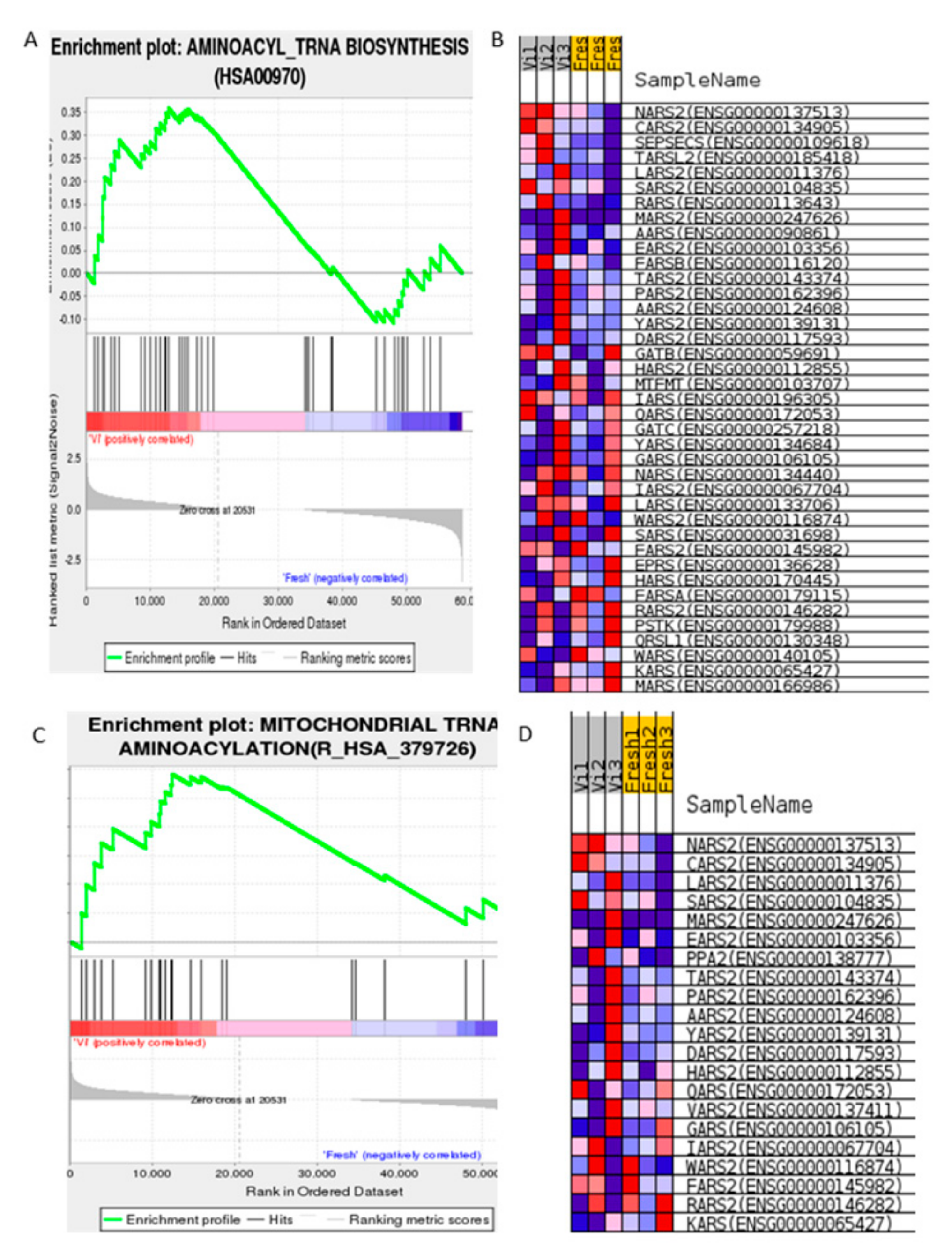
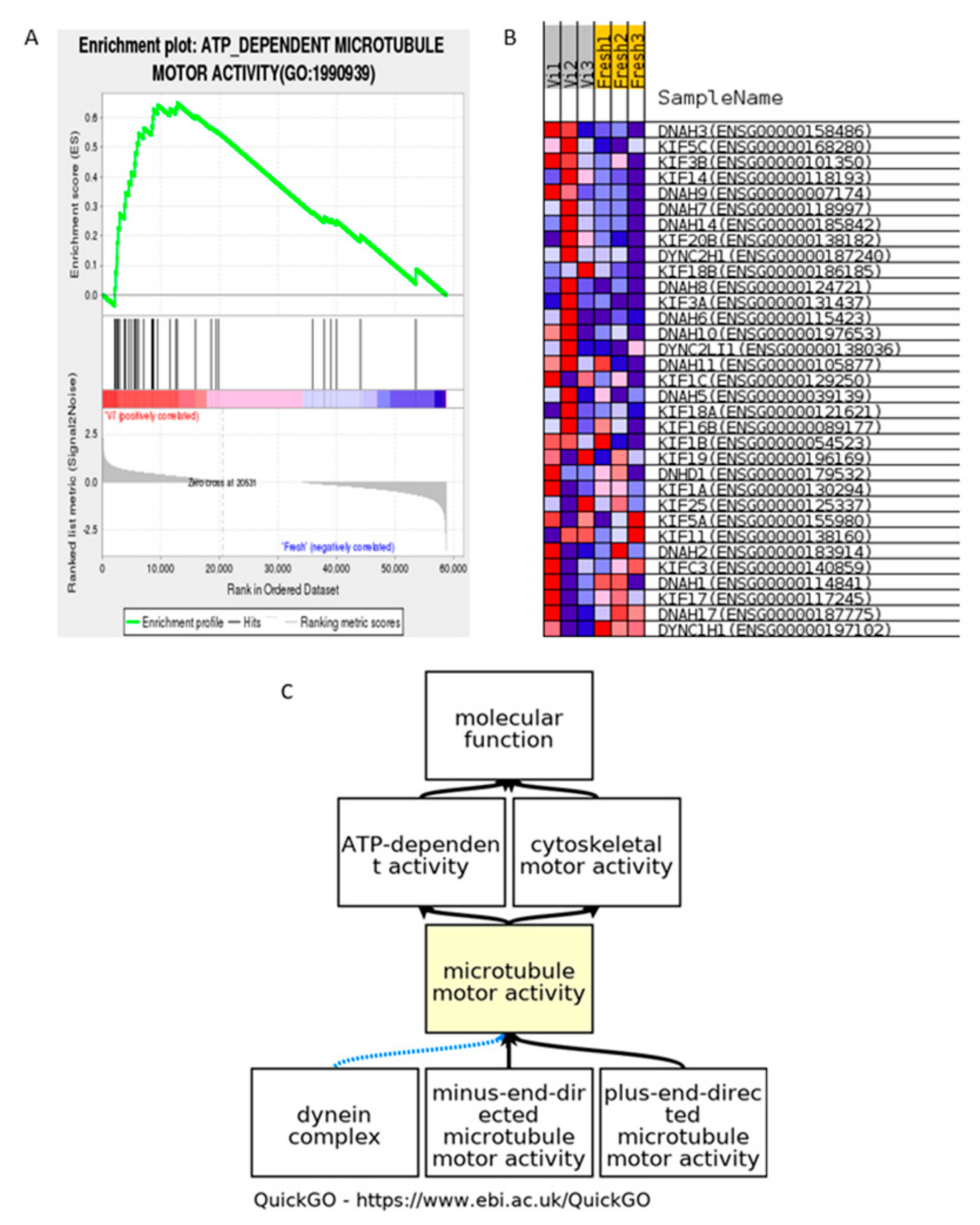
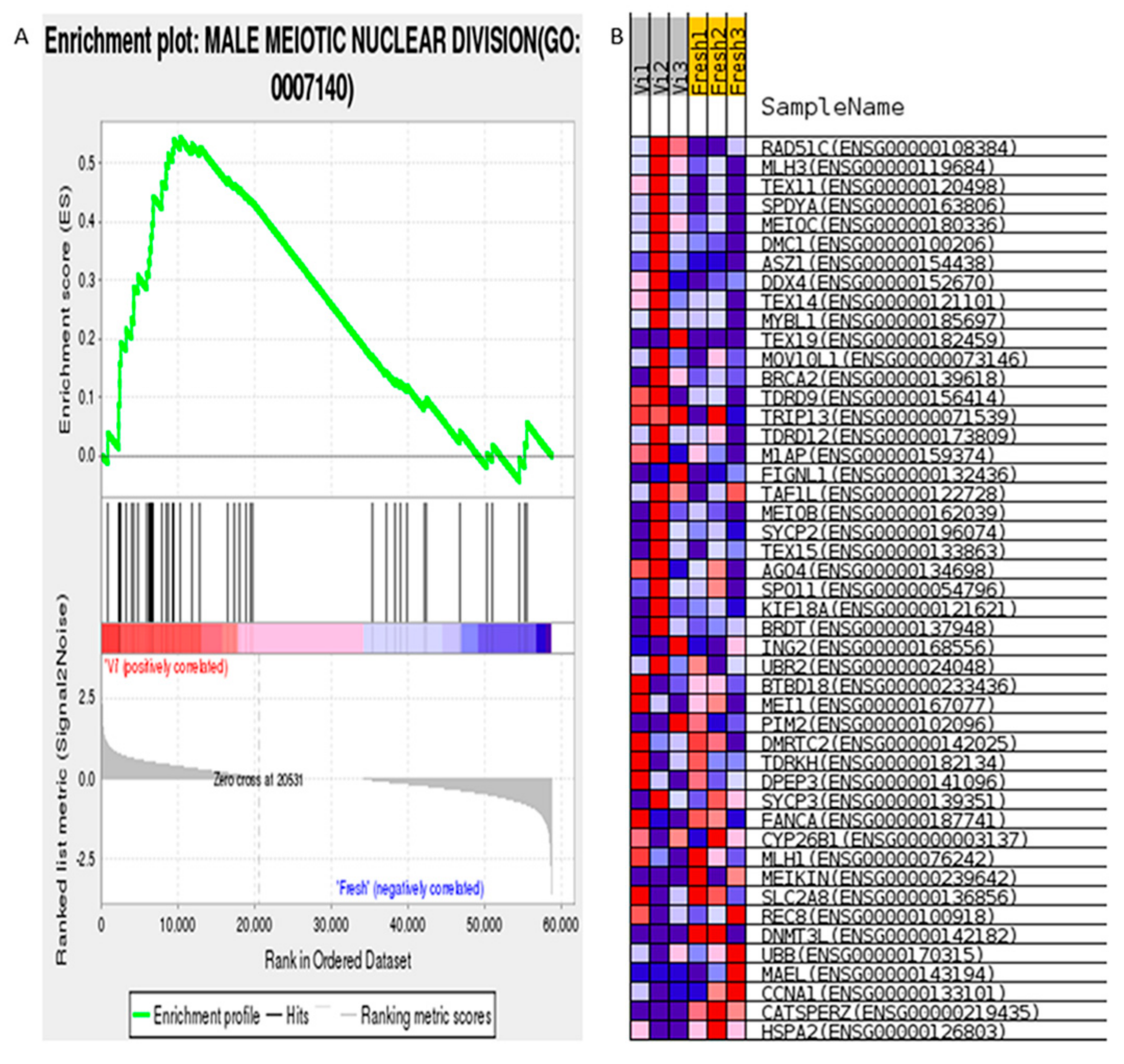
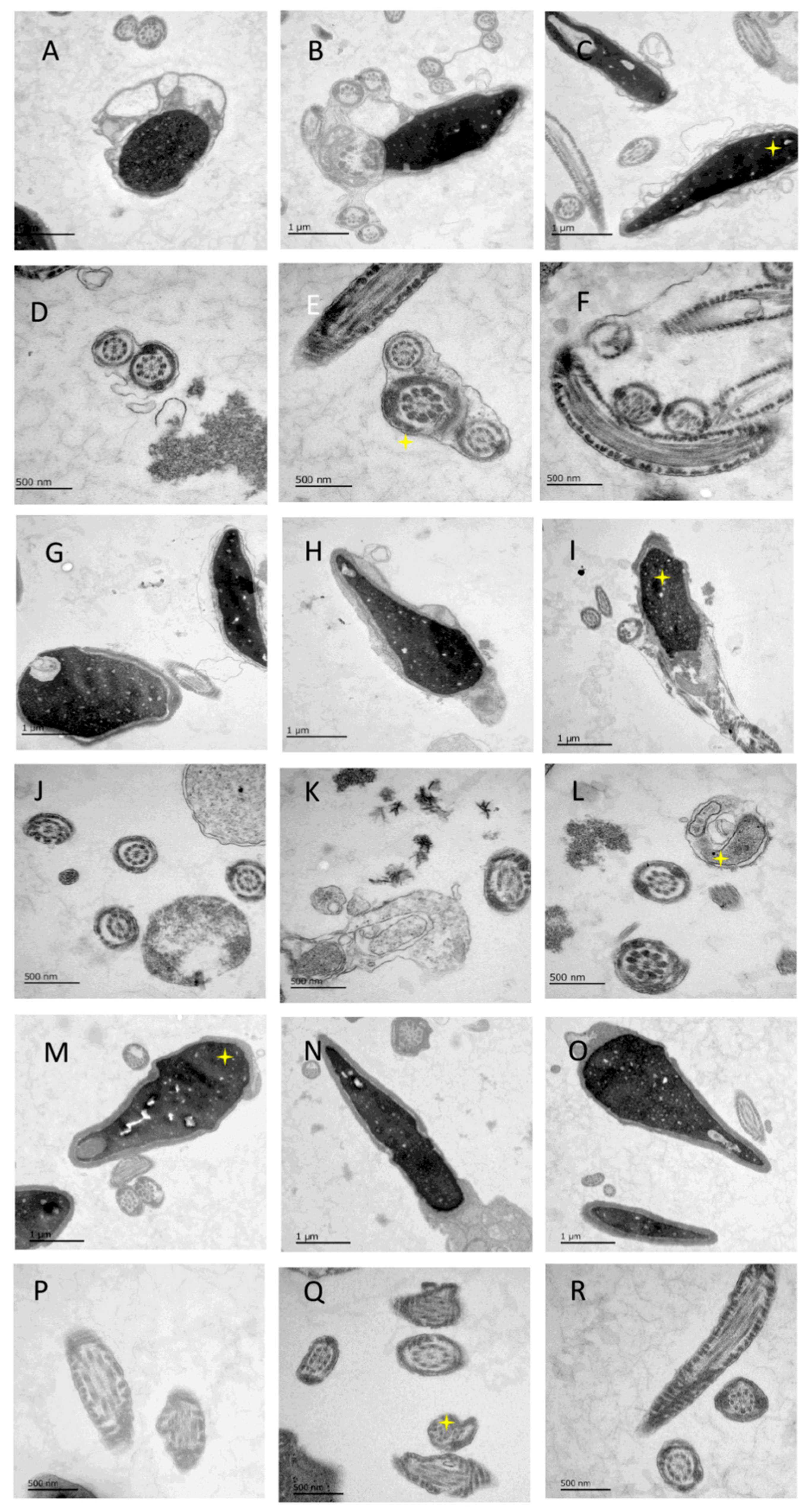
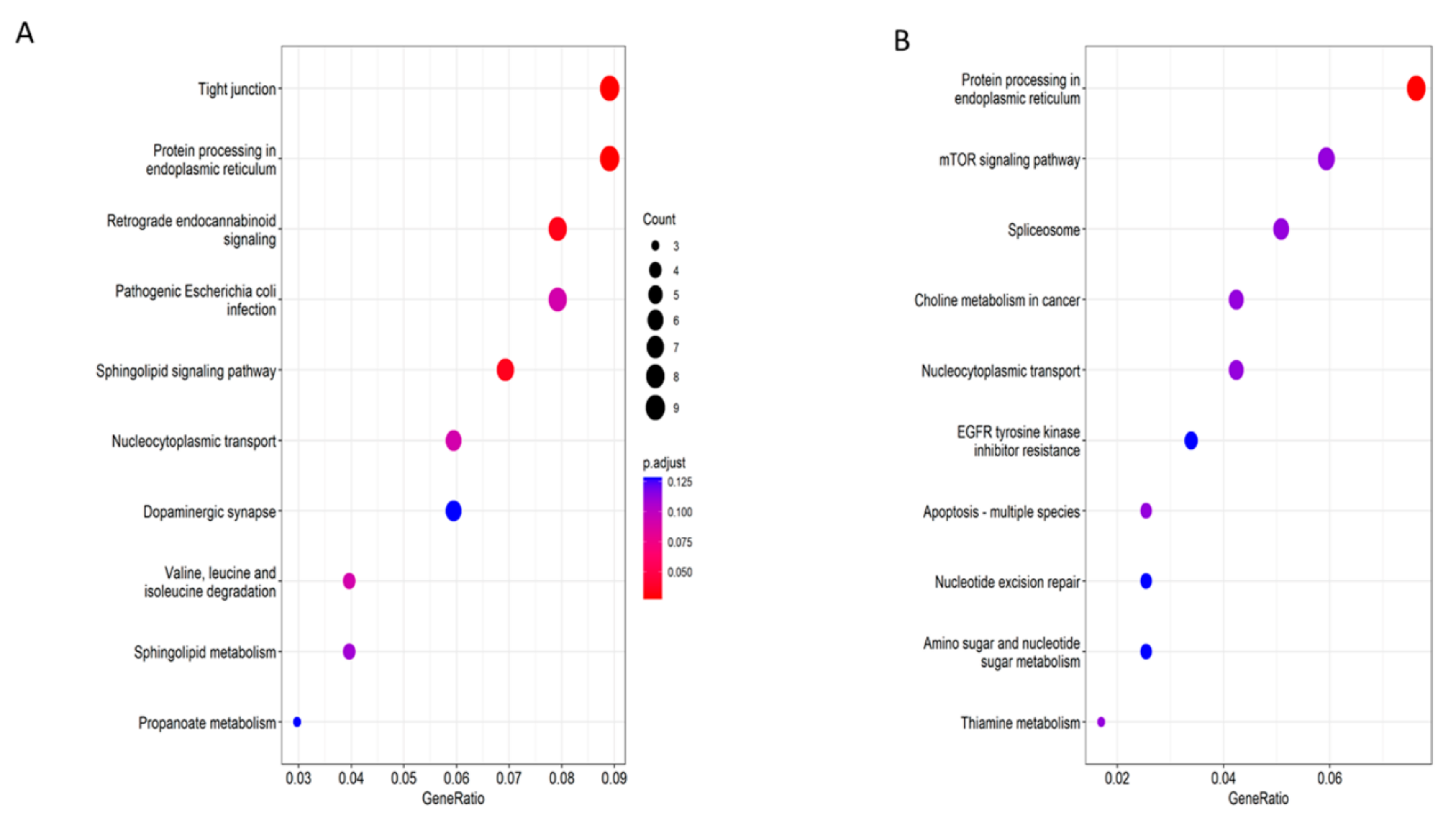
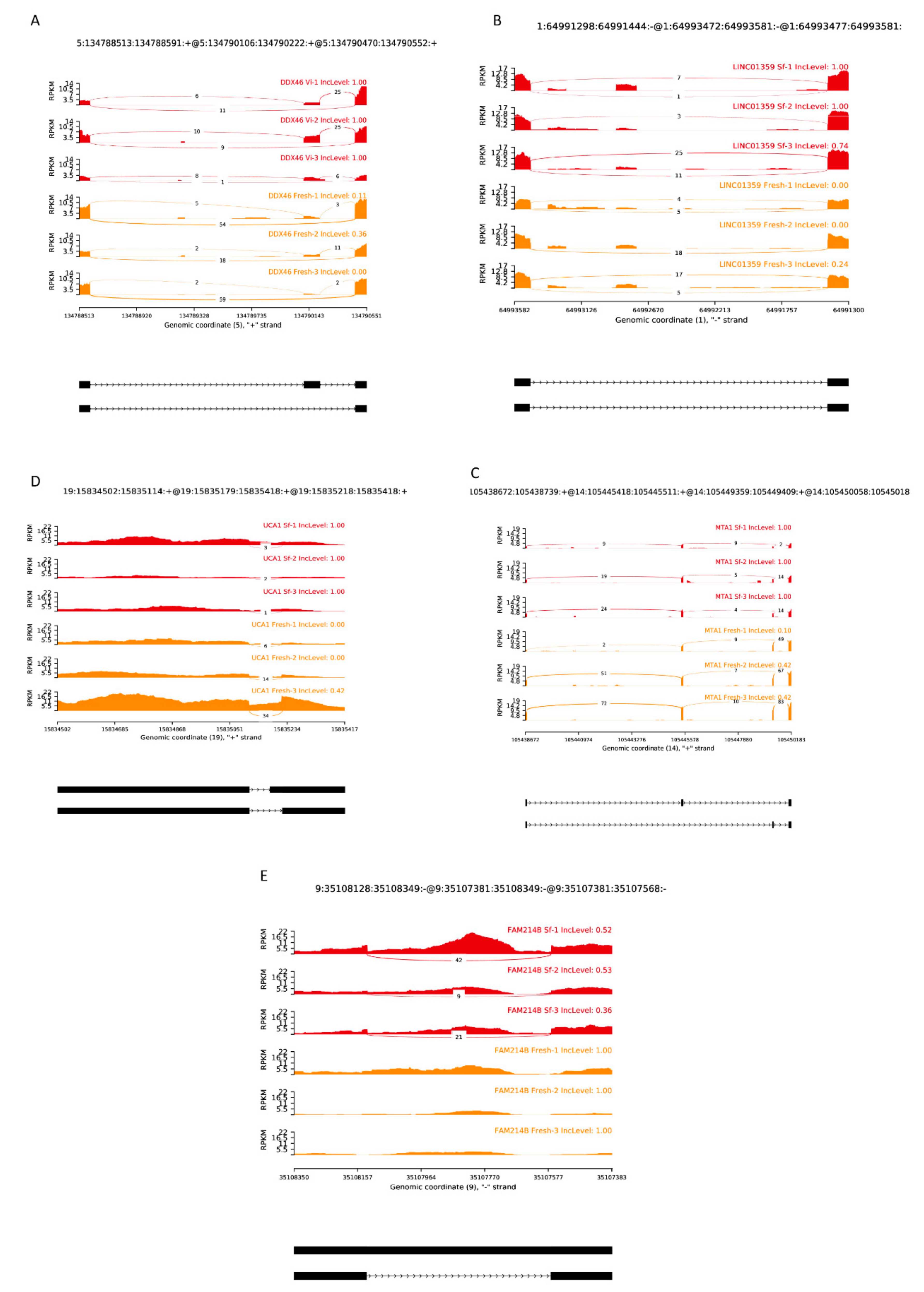
Publisher’s Note: MDPI stays neutral with regard to jurisdictional claims in published maps and institutional affiliations. |
© 2022 by the authors. Licensee MDPI, Basel, Switzerland. This article is an open access article distributed under the terms and conditions of the Creative Commons Attribution (CC BY) license (https://creativecommons.org/licenses/by/4.0/).
Share and Cite
Wang, W.; Todorov, P.; Pei, C.; Wang, M.; Isachenko, E.; Rahimi, G.; Mallmann, P.; Isachenko, V. Epigenetic Alterations in Cryopreserved Human Spermatozoa: Suspected Potential Functional Defects. Cells 2022, 11, 2110. https://doi.org/10.3390/cells11132110
Wang W, Todorov P, Pei C, Wang M, Isachenko E, Rahimi G, Mallmann P, Isachenko V. Epigenetic Alterations in Cryopreserved Human Spermatozoa: Suspected Potential Functional Defects. Cells. 2022; 11(13):2110. https://doi.org/10.3390/cells11132110
Chicago/Turabian StyleWang, Wanxue, Plamen Todorov, Cheng Pei, Mengying Wang, Evgenia Isachenko, Gohar Rahimi, Peter Mallmann, and Vladimir Isachenko. 2022. "Epigenetic Alterations in Cryopreserved Human Spermatozoa: Suspected Potential Functional Defects" Cells 11, no. 13: 2110. https://doi.org/10.3390/cells11132110
APA StyleWang, W., Todorov, P., Pei, C., Wang, M., Isachenko, E., Rahimi, G., Mallmann, P., & Isachenko, V. (2022). Epigenetic Alterations in Cryopreserved Human Spermatozoa: Suspected Potential Functional Defects. Cells, 11(13), 2110. https://doi.org/10.3390/cells11132110







